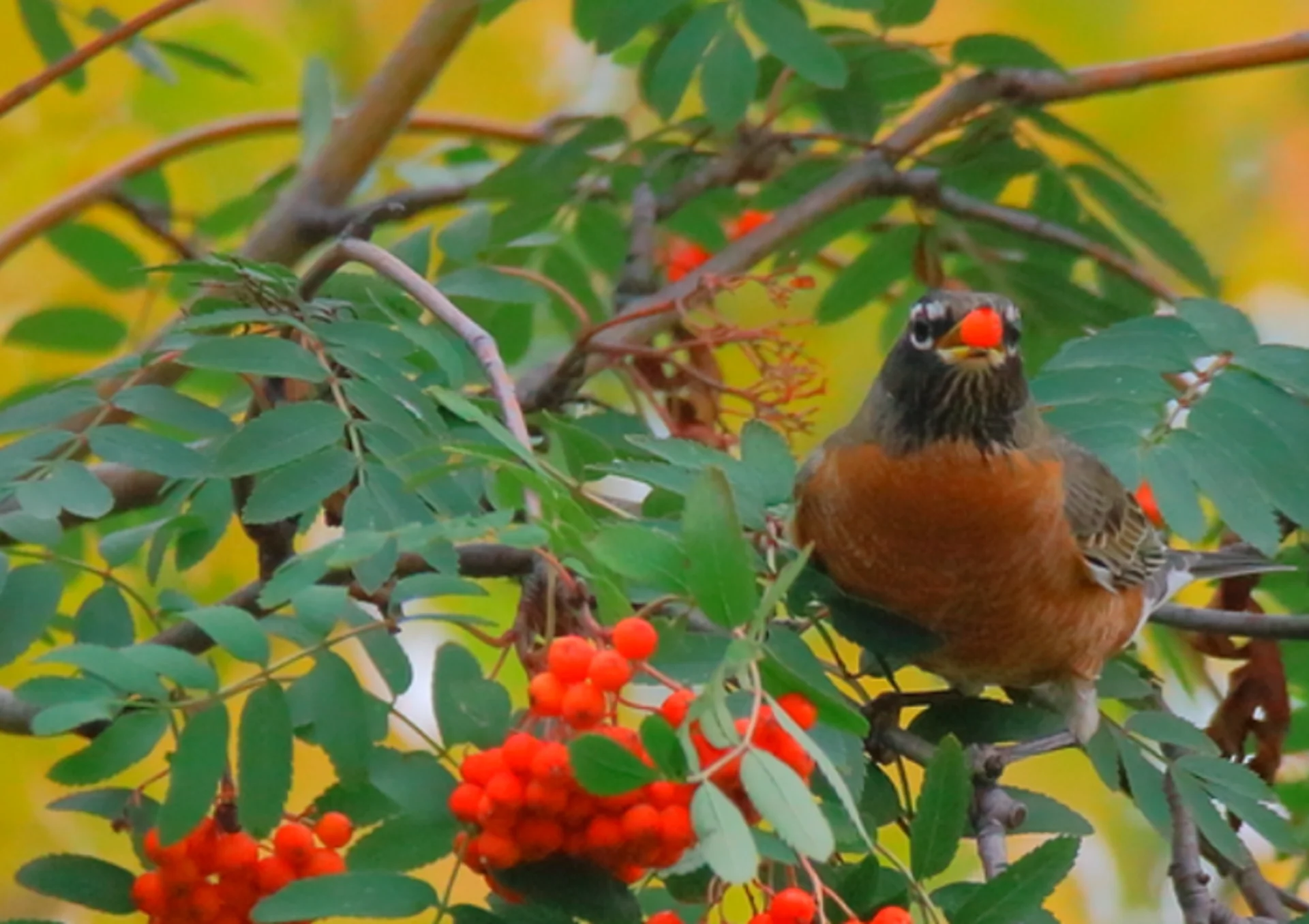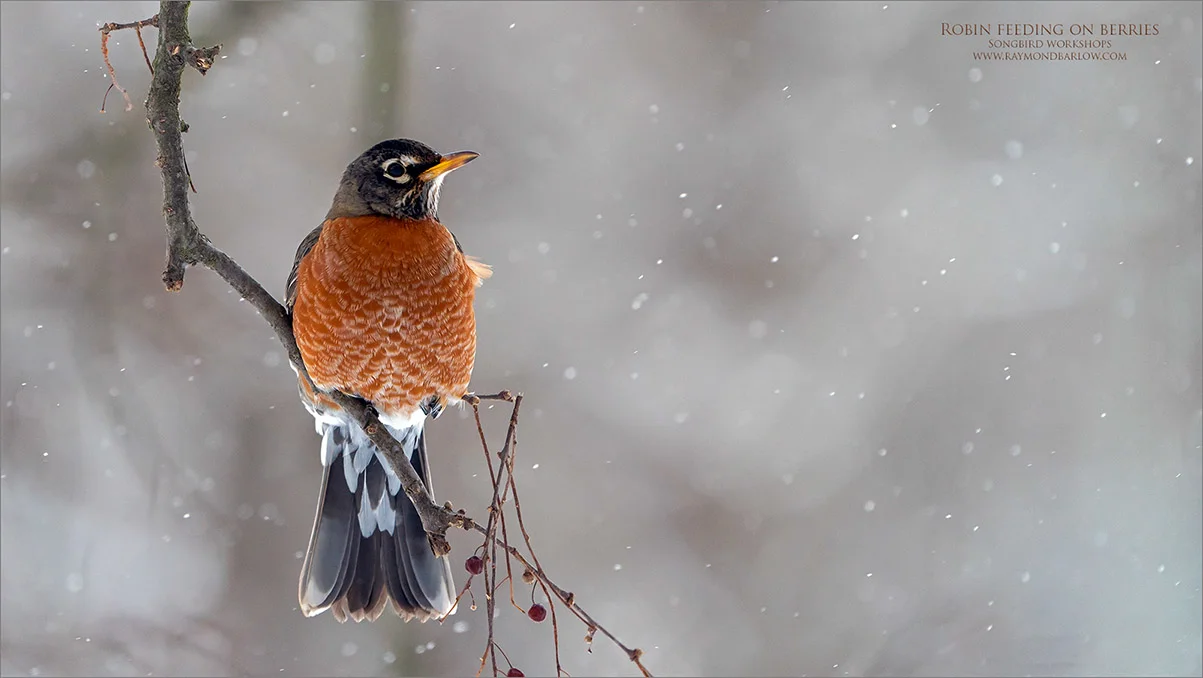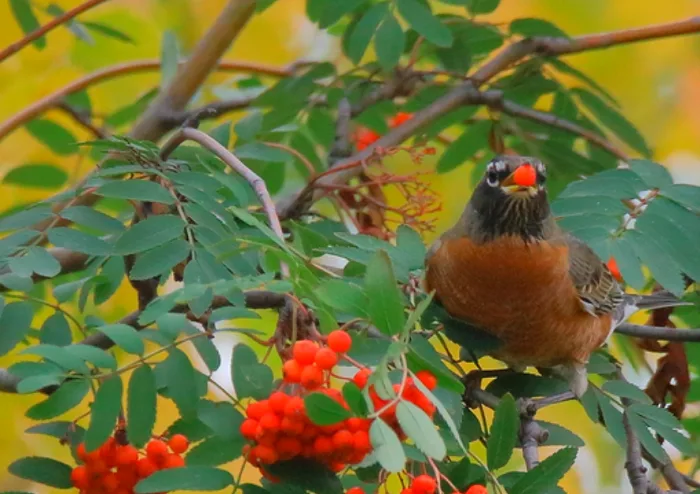
5 facts about robins—spring's unofficial mascot
Here are some interesting facts about spring's unofficial mascot
1. 'WINTER ROBINS' ARE A THING
While we may associate robins with spring, it turns out some of them don't mind the snow.
"Over the past few decades, more and more robins are adopting a non-migratory strategy, and they're migrating less than 100 kilometres," Kerrie Wilcox of Birds Canada told The Weather Network in an interview in 2023.
Wilcox manages a program called Project FeederWatch, where people count the birds in their backyards and report the findings online.
Between November and April 2021, members documented robins at 59 per cent of Ontario sites.
"That's way up from 27 per cent in our first season in 1989. Winter robins are also on an upward trend in all regions of Canada," she says.

Photo submitted to The Weather Network by Raymond Barlow.
2. ROBINS FLOCK TOGETHER (SOMETIMES)
Robins change their behaviour in the winter. The typically territorial birds will become more social, flocking together to make it easier to find food and spot predators.
"In winter, flocks of robins spend the night together," Kerrie says.
"Sometimes they can be in flocks of a quarter million, in areas like Florida and Texas."
Visit our Complete Guide to Spring 2024 for an in-depth look at the Spring Forecast, tips to plan for it and much more!
3. EGG COLOUR MATTERS

Photo submitted to The Weather Network by Amanda Duncan.
Robins are known for their beautiful eggs, which are bright blue due to a pigment called biliverdin, which is transferred to the eggshell when females lay their eggs.
"Male robins take careful note of the colour of the eggs their mate lays," Kerrie says.
"The brightness of the blue signals the quality of the egg."
A vibrant colour indicates the egg is healthy and likely has a healthy chick inside.
"Studies show that the males pay more attention to their nest if they've got bright blue eggs. And they'll spend more time feeding the chicks, And they'll defend the nest more vigorously."

Photo submitted to The Weather Network by Ed Fu.
4. NESTS TAKE A LOT OF WORK
Robin's nests are made out of mud, grass, twigs, and anything else the birds can get their beaks on - including pieces of cloth and paper. It takes between two to six days to construct a nest. During that time, a female can make up to 180 trips a day, transporting building materials.
5. THERE ARE AMERICAN AND EUROPEAN ROBINS

A European robin. (Getty Images Signature/Canva)
Robins are common in Canada and Europe, but the robins that live across the pond are different from the ones we see in North America.
"The robin that we have in North America is the American robin," Jackson Kusack, a Ph.D. candidate in the Department of Biology at Western University, told The Weather Network.
"It got its name from a European species, the European robin. Their names are similar mainly because they're kind of similar in terms of colour, they share this kind of reddish breast."
But that's where the similarities end, Kusack says.
The American robin is a thrush - and has social tendencies during winter.
Meanwhile, the European robin is a flycatcher, and it remains solitary year-round.
Here's a bonus fact: You can tell male and female robins apart. Male American robins have dark heads. Their backs and heads are redder, while female colours are more subdued and brown.
Thumbnail image: Custom graphic by Cheryl Santa Maria. Robin images (L-R): bcreigh/Getty Images, Lepoardinatree/Getty Images Signature, Canva Pro.






